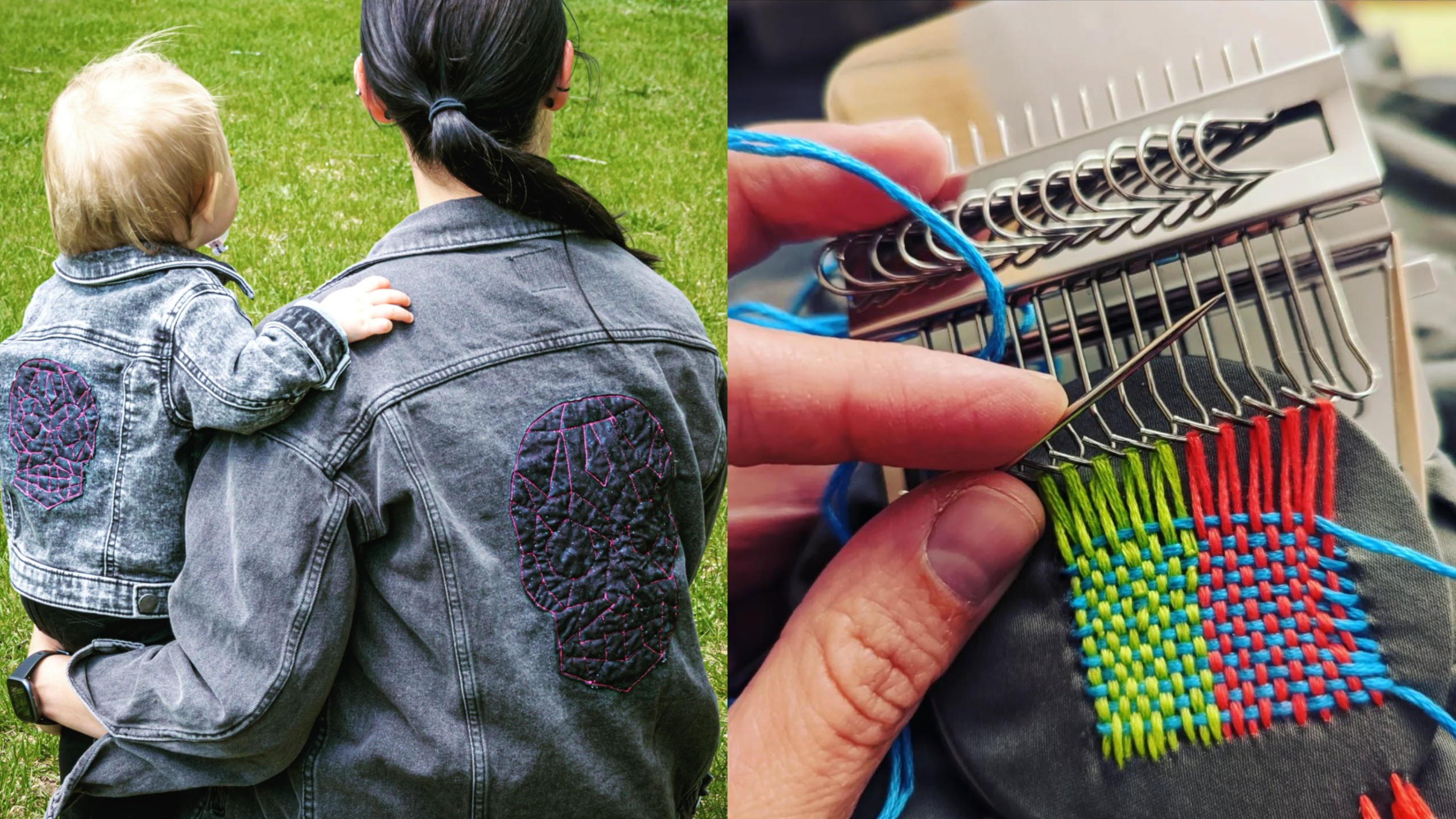We’ve all had a favorite piece of clothing break—maybe the zipper busted on a parka, or the cuffs frayed on a wool sweater. It may be theoretically possible to fix the issue, but many of us lack the skills, time, and/or patience.
Danielle Claseman, owner of the recently launched Mend Mpls, is here to help. Her virtual storefront offers mending and repair services, as well as the option to remake a textile item into something new. Textiles have always been part of Claseman’s life; she grew up watching both of her grandmothers and her mother sew and quilt. As a teenager, she made her own prom dress and went on to study apparel design and manufacturing in college.
In addition to their love of sewing, Claseman’s grandmothers modeled thriftiness honed during the Great Depression. As a kid, she says that may not have connected (“I didn't quite understand why we had to save all of the twist ties from every bread bag!”), but as an adult, she’s incorporated that make-do mindset into her personal values and work around environmental sustainability. She’s served on the board of Reuse Minnesota, was involved with Hennepin County’s waste reduction planning, makes and sells reusable sponges, and co-runs the Minnesota Cloth Diaper Bank, a non-profit program that makes cloth diapering more accessible.
“Mending was a natural intersection of my love of fiber arts and sewing and my passion for environmental sustainability,” Claseman says, noting that she’s volunteered at Fix-It Clinics facilitated by Reuse Minnesota. “We have to get away from this idea that we can only have economic prosperity through increased consumption... Buying more durable [clothing] and keeping the items you do have in use longer resonates with every aspect of my life.”
Claseman says Mend Mpls services fall into two main categories: machine repair and hand darning. Machine repair involves fixing what was originally manufactured—for example, replacing a zipper, patching a knee, and replacing elastics (thanks to her work with the Minnesota Cloth Diaper Bank, she’s replaced elastic on “literally thousands” of cloth diapers). Hand darning replicates fabric that has worn out, such as a hole in a sock or frayed cuff, with matching or contrasting thread.
“Visible mending is all the rage at the moment,” Claseman says. “At least in certain circles, having a patch or having a visible darn or even wearing intentionally upcycled garments is the aim.”
Prices range from $3 to fix a cloth diaper to several hundred dollars to repurpose an heirloom quilt into a jacket. Claseman says most projects fall in the $10-$50 range, and customers can reach out via the Mend Mpls website to request pricing. Some of her more unusual mending projects include fixing the fabric covering of a speaker and replacing the elastic on a pair of boxers. “I wouldn't really recommend that as an item to pay to get repaired, but to each their own!” she says with a chuckle.
Claseman notes that, unfortunately, it’s cost-prohibitive to mend certain clothing items. People aren’t interested in paying $30 to fix a $5 T-shirt from Target, assuming it can even be mended. The fast-fashion industry—which produces brands like Zara and Shein—contributes to overflowing landfills and the exploitation of workers around the world, as explored in this illuminating investigation from More Perfect Union.
“[Fast fashion clothing] isn't made in a quality that lends itself to be repaired,” she explains. “Often the fabrics are very inexpensive. The way it's constructed is very inexpensive. You can tell when an item is designed for durability and when it's not.”
Interested in purchasing mend-worthy clothing that Claseman can help you keep in use for the long haul? She recommends investing in high-quality fibers and fabrics—for example, a wool sweater over polyester. Another tell is the hardware: Metal zippers will hold up better than plastic, and buttons are usually easier to replace than snaps. Look for items that are marketed as being durable or designed for longer wear, like reinforced knee pants or kids’ clothes with grow-with-me foldable cuffs and waistbands. “If the manufacturer has already invested in making it durable, it's a lot more likely to be mendable,” she says.
Another tip: Purchase from clothing brands that offer secondhand reselling on their own websites, like Scandinavian-inspired kids’ brand Hanna Andersson and outdoor retailer Patagonia. “Most companies that don't design for durability aren't going to be able to have a secondhand market,” Claseman says, so it’s worth seeking out the ones that do.
Beyond mending services, Claseman teaches mending classes and clinics through Minneapolis Community Education and Reuse Minnesota, with upcoming events listed on the Mend Mpls website. “You don't need a full sewing machine or extensive knowledge,” she says. “It is accessible for the average person to do, and having a little sewing kit at home is probably as valuable as having a flashlight.”
“Think about extending the lifespan of your own stuff before buying anything,” she continues. “We have more than enough textiles on this planet to purpose and repurpose and mend and keep in circulation for a long time.”
Claseman is also active in passing on mending skills to the next generation. She’s volunteered with Club Mend at Roosevelt High School and will be helping with upcoming mending classes at St. Louis Park Public Schools.
“I'm excited that there are young students interested in this work who want to make it part of their lifestyle,” she says. “That is certainly a shift from when I was in high school, and I think that is really encouraging.”







